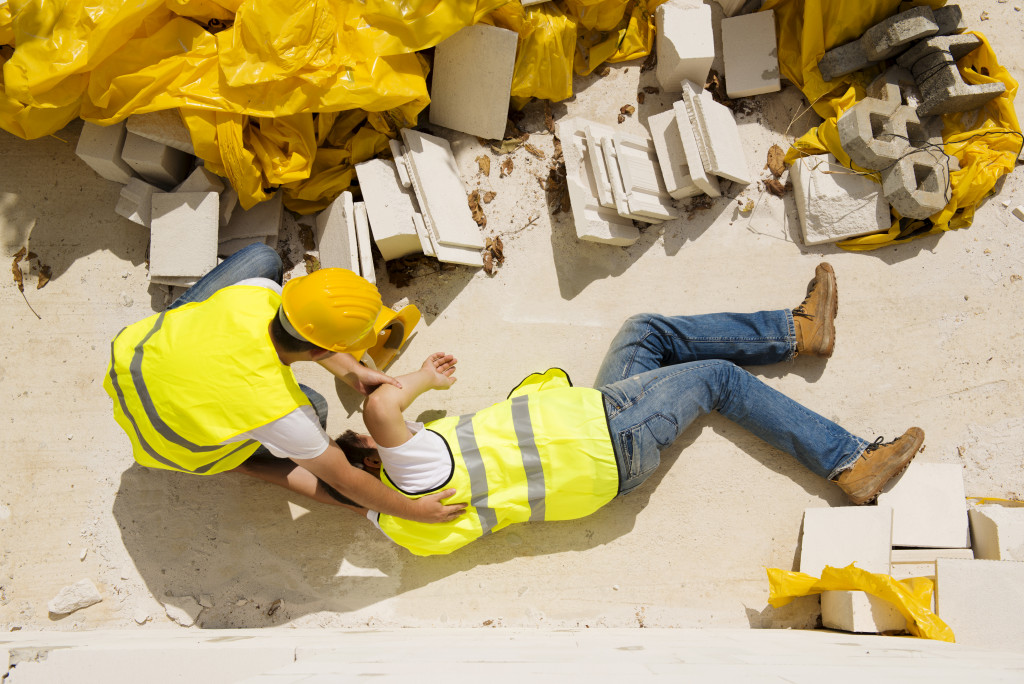- Workplace safety in construction sites is essential and must be taken seriously.
- Poor workplace safety can significantly impact workers, projects, employers, and productivity.
- Essential safety tools and practices for construction sites include proper training and regular equipment inspection.
- Safety equipment must be provided for workers, and communication lines should be open between team members and supervisors.
- Collaborating with reliable safety professionals can help identify hazards that might not be apparent to site managers or workers.
Construction sites can be dangerous places, and accidents can happen anytime. Workers in construction sites are primarily vulnerable to safety hazards, including falling from heights, exposure to harmful substances, and accidents involving heavy machinery. As a result, construction firms must take every necessary step toward ensuring their workers’ safety. This blog post will provide comprehensive tips and strategies for ensuring worker safety in construction sites.
The Importance of Worker Safety
Ensuring worker safety in construction is an essential aspect of any project. The impact of a workplace accident can be severe, leading to injuries, fatalities, or debilitating health conditions that can negatively affect families and communities.
Therefore, employers and employees in construction must take safety precautions seriously and adhere to industry standards and guidelines. You can create a safety culture and build stronger, healthier communities by prioritizing worker safety and implementing best practices for safe work environments.
How Poor Workplace Safety Impacts Construction Sites
Poor workplace safety can have a range of impacts on workers and construction sites, including:
- Injury or death to personnel due to unsafe working conditions.
- Delayed completion of projects.
- Damaged infrastructure caused by negligence in safety protocols.
- Increased employer costs due to insurance fees, compensation claims, and litigation.
- Loss of productivity due to fewer workers on the job site and possible disruption in other departments.
Essential Safety Tools and Practices for Construction Sites
Employers must adopt a comprehensive approach that includes proper training, up-to-date equipment, and appropriate safety protocols to ensure worker safety on construction sites. Here are some key safety tools and practices to consider:
Proper Training
Construction firms must provide regular training for workers on safety policies and procedures. Training should involve proper handling of heavy machinery, equipment, and hazardous materials. By ensuring workers are equipped with the knowledge of safety regulations, they will be mindful of situations and activities that put themselves and others at risk.
Regular Inspection

Inspections must be performed frequently to ensure compliance with safety rules and regulations. Inspection teams should be skilled in identifying deficient and unsafe conditions that can lead to potential hazards. The equipment used in the project site must also be inspected accordingly. Some examples are:
Crane inspection: Regular crane inspections must ensure the crane and its components are functioning correctly. Inspectors should also check for visible signs of damage, corrosion, or wear and tear.
Lift inspection: Inspections for lifts should cover all safety systems, such as brakes, locks, and emergency stop buttons. All lift operators must be certified before operating the equipment.
Forklift inspection: Forklifts should be regularly inspected for defects or damages, with any issues addressed immediately. Inspectors should also check the brakes, steering system, and fuel tank. Operators must have proper training before operating the forklift.
Scaffolding inspection: Scaffolding must be inspected to ensure compliance with safety regulations and standards. Inspectors should check for structural defects, loose connections, or corrosion that may compromise its stability and security.
Safety Equipment
Safety equipment like hard hats, gloves, safety goggles, and footwear must be provided for workers to prevent severe injuries. Workers must also be equipped with harnesses, lifelines, and other support devices when working at heights. Regular checks on the safety equipment to ensure they are in good condition must also be done.
Communication

Communication plays an essential role in ensuring worker safety on construction sites. Open communication lines between team members and supervisors should be installed. Workers should feel free to report safety hazards or any concerns they may face when working. Managers must also inform staff about emerging safety risks and how to mitigate them.
Collaboration
Collaborating with reliable and knowledgeable safety professionals is an excellent step toward ensuring worker safety. They can help identify hazards that might not be apparent to site managers or workers. Collaborating with site professionals help ensures that all risk levels and contingencies are handled and considered.
The Bottom Line
Construction sites require the utmost attention to safety measures to prevent incidents that can lead to severe injuries or fatalities. Despite having safety regulations, accidents can happen if safety procedures are not strictly followed.
Every construction firm must ensure that workers are adequately trained, equipped with safety equipment, and provided a safe working environment. Construction firms can ensure worker safety on their sites with the tips provided. By following the information listed in this blog post, businesses can work towards attaining zero incidents and maintaining a safe working environment.

